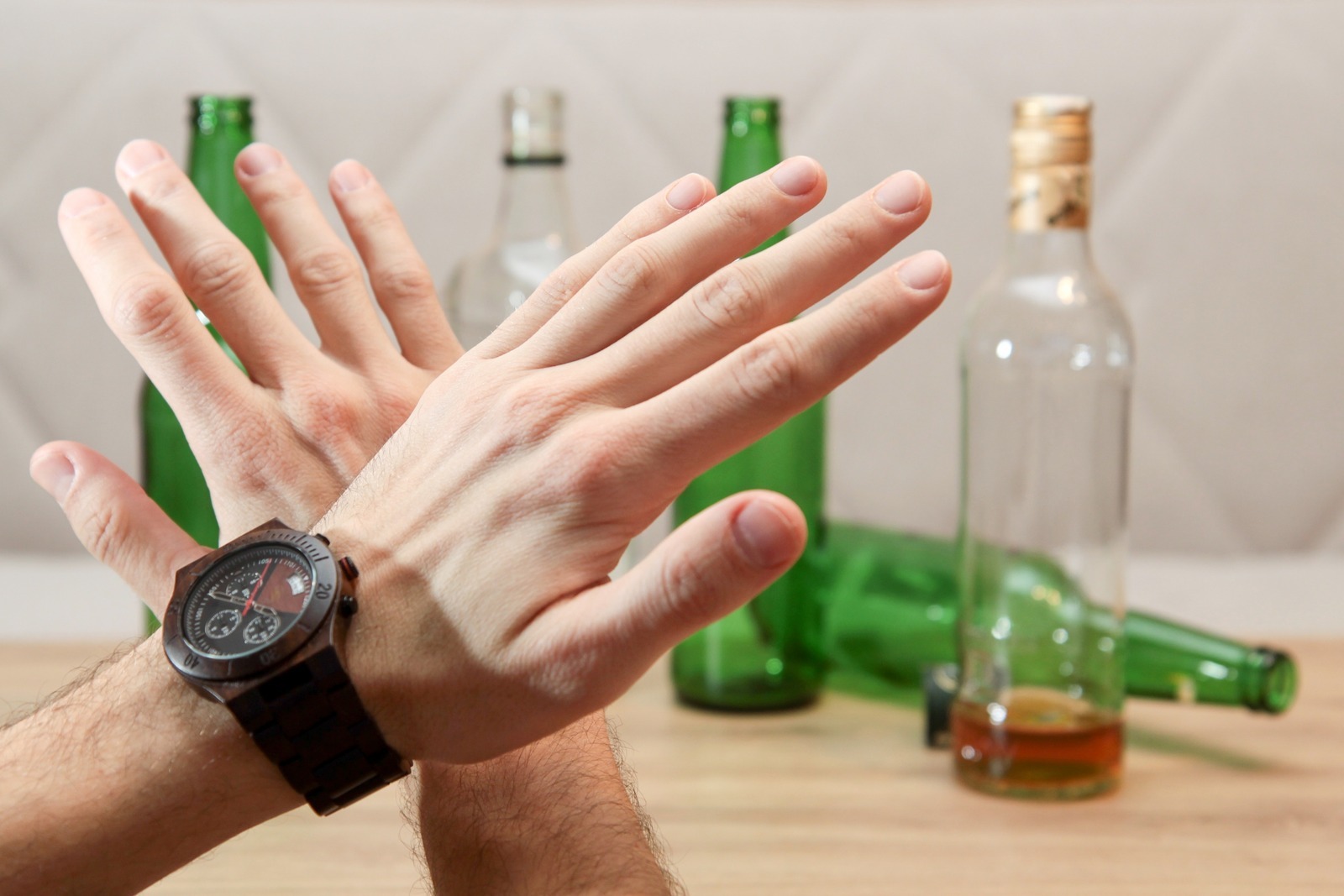What is the Pink Cloud in the Recovery Process?

What you will learn
- The pink cloud is a potential phase in addiction recovery marked by euphoria and optimism.
- It arises from the brain’s adjustment to sobriety, biochemical changes, and positive early experiences.
- Effects include relief, motivation, confidence, unrealistic expectations, and complacency.
- Maintaining balance is crucial to navigating challenges and seeking support effectively.
- Early recovery requires patience, self-care, support systems, trigger avoidance, coping skills, realistic goals, and embracing change.
The recovery process can and should include moments of celebration, but it can also be tempting to get ahead of yourself early. The term -pink cloud- refers to a period in early recovery characterized by euphoria, optimism, and invincibility.[1] However, this seemingly hopeful phase can also be accompanied by potential pitfalls, such as complacency, unrealistic expectations, and a vulnerability to relapse if it’s not handled with awareness and insight.
What is a Pink Cloud?
The term ‘pink cloud’ or ‘pink cloud syndrome’ encapsulates a honeymoon phase experienced by individuals in addiction recovery, marked by a surge of euphoria and optimism.[2] Typically occurring in the early stages of sobriety and later phases of addiction treatment, it represents a period of elation and relief after breaking free from substance abuse. This emotional high stems from the brain’s adjustment to the absence of drugs or alcohol and the positive transformations accompanying recovery efforts.
However, the pink cloud also carries inherent risks, including the potential for unrealistic expectations and overconfidence. While it can serve as a source of motivation and encouragement, it’s crucial to maintain a balanced perspective and realistic self-awareness, particularly during the early days of drug and alcohol recovery. Without ongoing support and a commitment to sustainable recovery practices, the pink cloud may dissipate—leaving you vulnerable to relapse.
What Causes the Pink Cloud?
The pink cloud phenomenon typically arises from the brain’s natural response to sobriety after a period of substance abuse. It represents a phase where individuals experience a surge of positive emotions, including euphoria, optimism, and a heightened sense of well-being. This emotional high is often a result of biochemical changes in the brain as it adjusts to the absence of drugs or alcohol.
During active addiction, substances like drugs or alcohol can disrupt the brain’s delicate balance of neurotransmitters, such as dopamine, serotonin, and endorphins, which are responsible for regulating mood and emotions.[3] When these substances are removed, the brain has to adapt. As a result, individuals may experience a sense of emotional clarity and stability, accompanied by feelings of happiness and contentment.
Furthermore, the early successes and positive changes experienced in recovery can contribute to the pink cloud sensation. Achieving milestones such as sobriety, improved relationships, and personal growth can reinforce feelings of accomplishment and well-being. Additionally, the support and encouragement received from peers, counselors, and support groups during this period can further enhance the sense of optimism and positivity.[4]
However, it’s important to recognize that the pink cloud is temporary and may diminish as individuals encounter challenges and obstacles on their recovery journey. It’s not uncommon for individuals in early recovery to experience fluctuations in mood and emotions as they navigate the ups and downs of sobriety.
How Does the Pink Cloud Affect People in Early Sobriety?

The pink cloud can have both positive and negative effects on individuals in early sobriety. On the positive side, it can provide relief and optimism, making the initial stages of recovery feel more manageable and rewarding.[5] It may be a powerful incentive to continue pursuing sobriety and embracing positive lifestyle changes. Additionally, the pink cloud can enhance self-esteem and confidence, empowering individuals to believe in overcoming addiction and building a fulfilling life in recovery.
However, the pink cloud can also pose risks if not cautiously approached. Some individuals may become overly optimistic and develop unrealistic expectations about their recovery journey, believing that the euphoric feelings will last indefinitely. This can lead to complacency and a false sense of security, making individuals vulnerable to relapse when faced with challenges or triggers.
Moreover, the intensity of the pink cloud can overshadow underlying issues that need to be addressed in therapy or support groups, delaying important emotional healing and personal growth. As the pink cloud inevitably fades, individuals may experience a sense of disappointment or disillusionment, struggling to cope with the return of normalcy and everyday stressors without the same level of euphoria.
Overall, while the pink cloud can provide a valuable source of motivation and encouragement in early sobriety, individuals need to maintain a balanced perspective and seek support from peers, counselors, and support groups to navigate the complexities of recovery successfully. By embracing realistic expectations and adopting healthy coping strategies, individuals can harness the positive aspects of the pink cloud while mitigating its potential pitfalls.
What Should I Keep in Mind During the Early Period of My Recovery?
During the early recovery period, it’s important to remember several key factors to support your journey towards sobriety:[6, 7]
- Patience and persistence: Recovery is a gradual process that takes time and effort. Be patient with yourself and acknowledge that healing takes time. Stay committed to your treatment program, mental health, and recovery goals, and persist through challenges and setbacks.
- Self-care: Prioritize self-care to nurture your physical, emotional, and mental well-being. Establish healthy routines, such as regular exercise, nutritious eating, adequate sleep, and stress management techniques. Engage in activities that bring you joy and relaxation.
- Support system: Surround yourself with a strong support system of family, friends, peers, and professionals who understand and support your recovery journey. Attend support group meetings, therapy sessions, or counseling sessions regularly to stay connected and accountable.
- Avoid triggers: Identify and avoid triggers that may tempt you to use substances again. This could include places, people, or situations associated with your past substance use. Develop strategies to cope with triggers when they arise, such as practicing mindfulness, deep breathing, or reaching out to your support network.
- Practice coping skills: Equip yourself with healthy coping skills to manage stress, cravings, and difficult emotions. Explore techniques such as mindfulness meditation, relaxation exercises, journaling, or creative expression to help you navigate challenging moments without turning to substances.
- Set realistic goals: Set achievable goals for yourself and celebrate your progress. Break larger goals into smaller, manageable steps to make them more attainable. Focus on making positive changes one day at a time and celebrate each milestone you achieve in your recovery journey.
- Embrace change: Be open to personal growth and transformation as you embark on your recovery journey. Recognize that change is a natural part of the process and embrace opportunities for self-discovery and improvement. Stay flexible and adaptable to new experiences and challenges that arise along the way.
By remembering these principles and staying committed to your recovery, you can build a strong foundation for long-term sobriety and create a fulfilling and meaningful life in recovery.
At our Maryland Addiction Treatment Center, we offer personalized care programs designed to meet your specific needs. If you would like to learn more about our programs, please do not hesitate to contact us for more information.
Ready to get help for you or a loved one? Contact us
To ensure accuracy and quality, every contributor to the Alpas Wellness resource library undergoes a thorough evaluation of their experience, credentials, and achievements prior to publication.
Frequently Asked Questions About the Pink Cloud
How long does the Pink Cloud typically last?
The duration of the Pink Cloud phase can vary widely from person to person. For some individuals, it may last only a few weeks; for others, it can persist for several months. However, it’s essential to recognize that the Pink Cloud is a temporary state and is likely to diminish over time as individuals adjust to the realities and challenges of long-term sobriety.
Can everyone experience the Pink Cloud during recovery?
While many individuals in addiction recovery may experience the Pink Cloud phenomenon to some extent, not everyone will necessarily encounter it. Factors such as individual personality, past experiences, and the specific circumstances of one’s recovery journey can influence whether or not someone experiences the Pink Cloud.
What are the signs that someone is experiencing the Pink Cloud?
Signs that someone is experiencing the Pink Cloud may include a noticeable increase in optimism, enthusiasm, and energy levels. They may appear highly motivated, confident, and upbeat about their recovery journey. However, balancing these positive emotions with a realistic perspective and ongoing support is essential to avoid potential pitfalls.
How can I differentiate between genuine progress and the Pink Cloud?
Differentiating between genuine progress and the Pink Cloud can be challenging but crucial in maintaining long-term sobriety. Genuine progress is characterized by sustained behavioral changes, improved coping skills, and a deeper understanding of oneself and one’s triggers. In contrast, the Pink Cloud is often marked by temporary euphoria and optimism that may not reflect lasting changes in behavior or mindset.
How can I maintain my recovery momentum after the Pink Cloud fades?
Maintaining recovery momentum after the Pink Cloud fades involves establishing sustainable habits, seeking ongoing support, and remaining vigilant against relapse triggers. It’s essential to continue engaging in therapy, attending support group meetings, and practicing self-care to reinforce your commitment to sobriety. Developing healthy coping strategies, setting realistic goals, and staying connected to your support network can help you navigate the ups and downs of recovery with resilience and determination.
Cherry, K. (nd). What Is the Pink Cloud in Addiction Recovery? Healthline. Retrieved from https://www.healthline.com/health/pink-cloud#meaning
Cherry, K. (nd). What Is the Pink Cloud in Addiction Recovery? Healthline. Retrieved from https://www.healthline.com/health/pink-cloud#meaning
National Institute on Drug Abuse. (2020). Drugs and the Brain. Retrieved from https://nida.nih.gov/publications/drugs-brains-behavior-science-addiction/drugs-brain
Zhou, Q., Hommel, B., & Pochon, J. B. (2007). Neural mechanisms underlying reinforcement learning in humans. Journal of Neuroscience. Retrieved from https://www.ncbi.nlm.nih.gov/pmc/articles/PMC1852519/
Gonzales, R., Anglin, M. D., Beattie, R., Ong, C. A., & Glik, D. C. (2012). Understanding recovery barriers: Youth perceptions about substance use relapse. American Journal of Health Behavior.Retrieved from https://www.ncbi.nlm.nih.gov/pmc/articles/PMC4023909/
Melemis, S. M. (2015). Relapse prevention and the five rules of recovery. The Yale Journal of Biology and Medicine, 88(3), 325–332. https://www.ncbi.nlm.nih.gov/pmc/articles/PMC4553654/
Hendershot, C. S., Witkiewitz, K., George, W. H., & Marlatt, G. A. (2011). Relapse prevention for addictive behaviors. Substance Abuse Treatment, Prevention, and Policy, 6(1). https://doi.org/10.1186/1747-597x-6-17